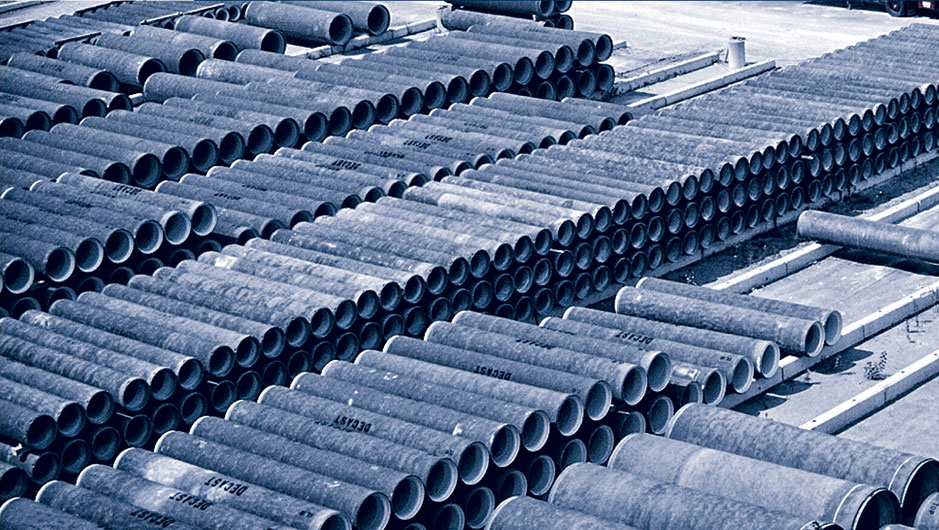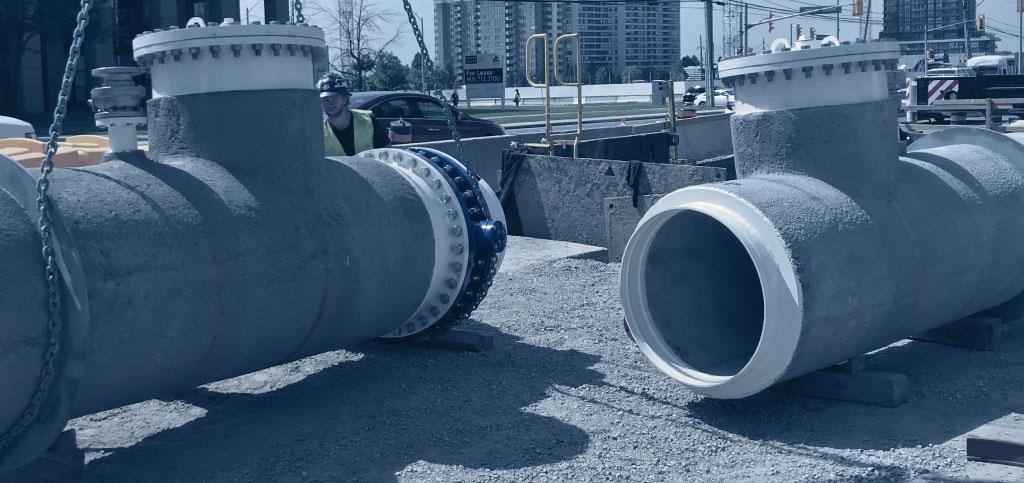
A concrete pressure pipe is a specially designed item that brings together the advantageous properties of Portland cement concrete and steel, forming a sturdy structure for transporting liquids under varying external stress and internal pressure conditions.
There are 4 types of CPP, each with their own unique characteristics.
Learn more about the differences between them
CPP can be used for virtually any water conveyance application.
Learn more about which type of CPP best suits each application
CPP has a variety of benefits. Learn more about the advantages of
CPP why it is the right choice for your project
Lloyd’s Register Quality Assurance (LRQA) Certified
The American Water Works Association (AWWA) defines four types of concrete pressure pipe:
C300 utilizes a steel cylinder and steel rebar cages in the pipe design. It is available from 30in (750mm) diameter and up and is typically limited to a maximum working pressure of 260psi (1790kPa).
There are two types of C301 pipe, Lined-Cylinder Pipe (LCP) and Embedded-Cylinder Pipe (ECP), both of which utilize a steel cylinder and pre-stress wire.
LCP is available up to a maximum of 60in (1500mm) diameter, while ECP is most commonly available from 48in (1200mm) and up.
C302 utilizes steel rebar cages and can have either steel or concrete joint rings. It is commonly available from 24in (600mm) to 144in (3660mm) and limited to a maximum working pressure of 55psi (380kPa).
First offered in the early 1940’s, it is similar to C301 pipe but utilizes rebar in place of pre-stress wire and is classified as a semi-rigid pipe. C303 is commonly available from 14in (350mm) to 64in (1600mm).




This matrix is intended to provide general guidelines for the use of concrete pressure pipe.
Before making any design decision, you should consult your local manufacturer.
To find a manufacturer in your area, contact ACPPA.


ACCOUNT REGISTRATION

ACCOUNT REGISTRATION



